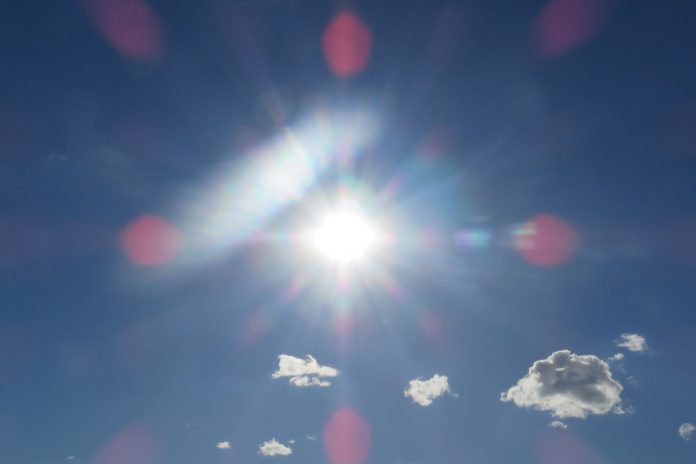With the UK experiencing unprecedented heatwaves in 2022, we need to look at how to properly look after ourselves in this new weather – starting with our sodium intake
Most of the time, we are told to cut down on the amount of salt in our diet, as this increases blood pressure and is a significant risk factor for heart disease and stroke, however, in a heatwave, things are rather different
We tend to lose salt as we sweat more profusely, and in heatwave there is a danger our sodium levels can become too low.
Hyponatraemia
Hyponatraemia – this is the correct medical term for low sodium levels. It is defined as a blood sodium level of less than 135 mmol/L. The only way to diagnose hyponatraemia is with a blood test. By far the best option is to take steps and not let this develop in the first place.
A recent 2021 study has shown that hospital admissions for hyponatraemia are significantly more common in the summer than in the winter. People with hyponatraemia have a 60 times increased risk of illness and death, compared to those with normal sodium levels. It is more common when the air temperatures are high, but humidity is low.
What are the symptoms?
If your blood sodium levels are too low, symptoms can creep up on you over a period of hours, days, or weeks. You may feel very tired, have a loss of appetite, nausea and vomiting. You might experience muscle cramps, and find your muscles feel very weak. Sometimes people have headaches, and if the sodium levels are not corrected, they can become confused and disorientated. A low sodium level can cause falls in the elderly. Low sodium levels can result in fits, coma, and may even be fatal.
Who is at most risk of hyponatraemia?
In a heatwave, we are all at risk of hyponatraemia. But the risk is highest in those who are already at increased risk, such as people with –
- Heart failure
- Chronic liver disease
- Chronic kidney disease
- High blood pressure
- Diabetes
- Medication such as diuretics, especially thiazide diuretics such chlorothiazide, hydrochlorothiazide, indapamide and metolazone
- Low body weight
- Athletes and marathon runners
- Those living in institutions
- The elderly
- Anyone with excessive water intake
- Those fighting off the Covid-19 infection
The role of sodium
Sodium is vital for enabling the body to retain water. When we sweat, we lose sodium. It’s also part of the body’s natural reflex to feel thirsty in the heat and to drink more water, which is essential to avoid dehydration. But as we lose sodium from sweat, and drink more water, we are diluting our sodium reserves. For most healthy adults, there should be enough sodium in the diet to replace what is needed. But in people in higher-risk situations, this may not be the case and other measures may be needed. In a heatwave, we are all in a higher risk situation.
Excessive sodium loss in sweat
If you have to work outside in the heat, you can sweat up to 1.5L of sweat per hour. You could lose 10-12 L of sweat per day. It’s important to replace these body fluids, but also to include replacing the sodium. For those of us indoors, we will be sweating a lot more than we normally do, and the same principles apply.
Sodium in food and drink
You can help maintain your sodium levels during the heatwave by eating foods and drinking drinks with a high sodium content. It’s not pleasant drinking salt water! so eating and drinking more palatable items is a preferable solution.
Foods high in sodium
- Smoked meat and fish, bacon, ham, sausages, and anchovies
- Fruit and vegetables rich in sodium include apples, avocados, mangoes, melon and pears, and carrots, spinach and beetroot
- Salted nuts
- Peanut butter (salted)
- Sunflower seeds
- Baked beans – Not the low-salt variety
- Bread
- Marmite
- Salty snacks
- Gravy
- Stock cubes
- Pickled foods
Drinks high in sodium
- Bovril
- Vegetable juice – such as tomato juice
- Sports drinks, or tablets which are added to water
- Fizzy drinks
- Cocoa
- Fruit juice
- Tinned soup
What to avoid during a heatwave?
Don’t drink alcohol – Alcohol tends to lower sodium levels. Alcohol is a diuretic and causes you to lose water and sodium in the urine. Drinking heavily and vomiting results in sodium loss.
No caffeine – Caffeine is also a diuretic. In fact, drinking 4 cups of coffee can cause you to lose 1200 mg of sodium – that’s your entire daily recommended sodium intake lost all in one go! Go caffeine-free during the heat if you can.
Stay hydrated and maintain a varied diet
It’s vital to keep drinking fluids in a heatwave, and water is the best thing to drink.
However, in excessive heat, remember your body needs sodium and vary your diet and drinks accordingly. If you are caring for children and the elderly, encourage them to do this too. Keeping cool will help you conserve water and sodium, so it’s vital to follow all the common sense measures such as avoiding the midday sun, sitting in the shade, and taking regular cool showers.
But in addition to this, do remember to keep your salt intake going.
It’s certainly true that most of us eat too much salt and generally need to restrict our intake. But in a heatwave, the advice is rather different.
It’s time to up your salt intake.
Resources:
- https://www.nutranews.org/en–sports-endurance–heatwave-alert-why-focus-on-sodium–1419
- https://www.wikidoc.org/index.php/Hyponatremia_risk_factors
- https://www.ncbi.nlm.nih.gov/pmc/articles/PMC2267797/
- https://healthyeating.sfgate.com/alcohol-deplete-sodium-level-5279.html
This piece was written and provided by Dr Deborah Lee, Dr Fox Online Pharmacy











